Central City
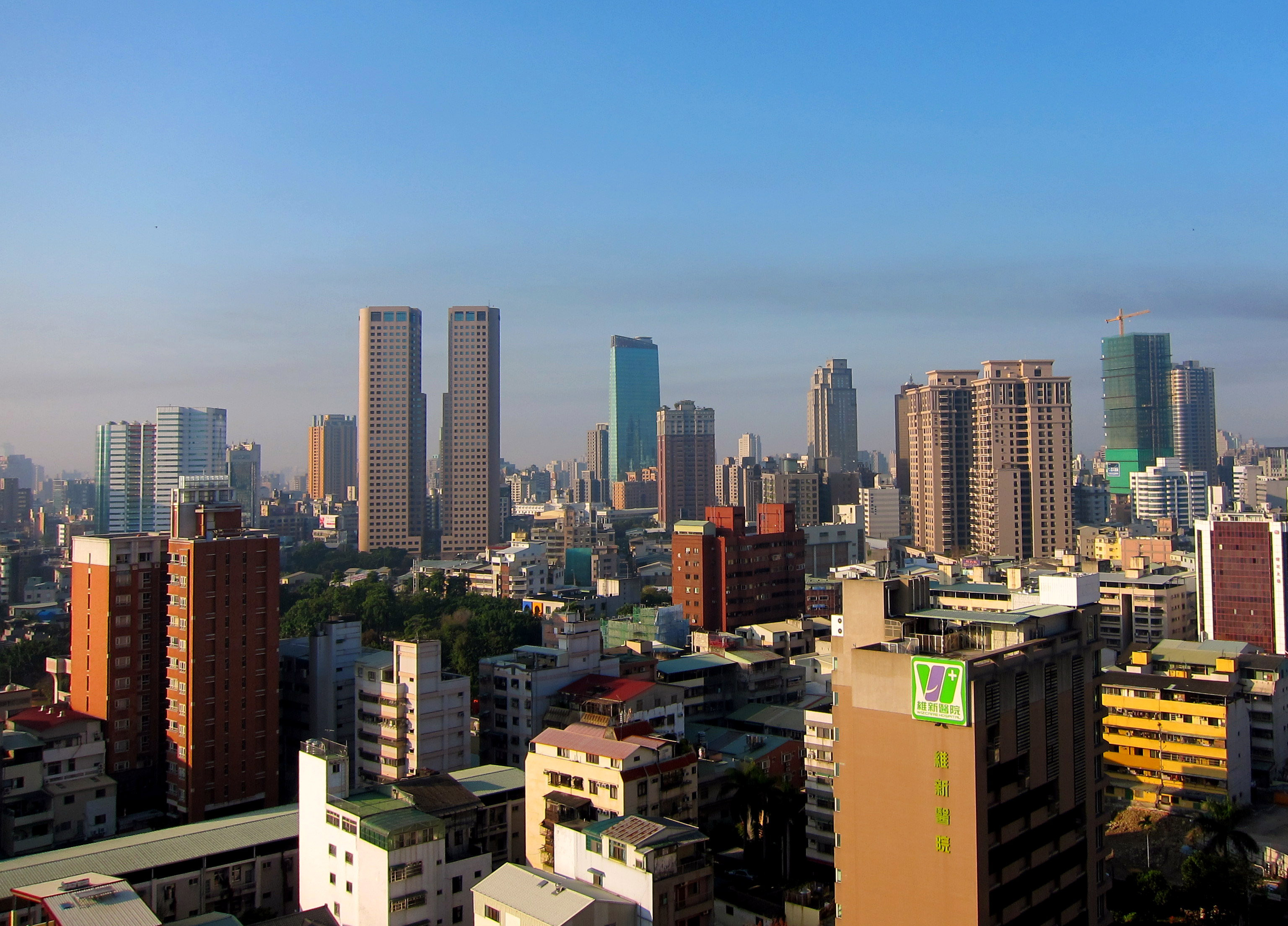
I’ve gotten most of the urban exploration out of my system over the past weekend and am now beginning to really appreciate the city that I was destined to discover.
The image comes from here.
Maybe that’s a somewhat dramatic way to put it, but as a new resident of the largest city in Taiwan that isn’t Taipei and, specifically, the district that is apparently home to the National Taiwan Symphony Orchestra (?) (!), I feel good.
I’ve toured a decent bit around with the help of the buses and a little bit of Internet guidance. I probably didn’t go the exact “tourist route”, but I did try to make sure that I could understand the city from the perspective of someone who is staying here (at least, who is here for three months or so).
I’ve also taken a lot of pictures, which I might as well use to describe what I think about the whole area. I could try to do one of those Internet urbanist-style city reviews, which I think I may have done enough photography to do!
Not until I was at a dinner on Friday did I get out into the city (since I came in the middle of the week and started working right away). The place that we went was in Dali, which is fairly dense but right on the edge of Taichung’s urban sprawl network.
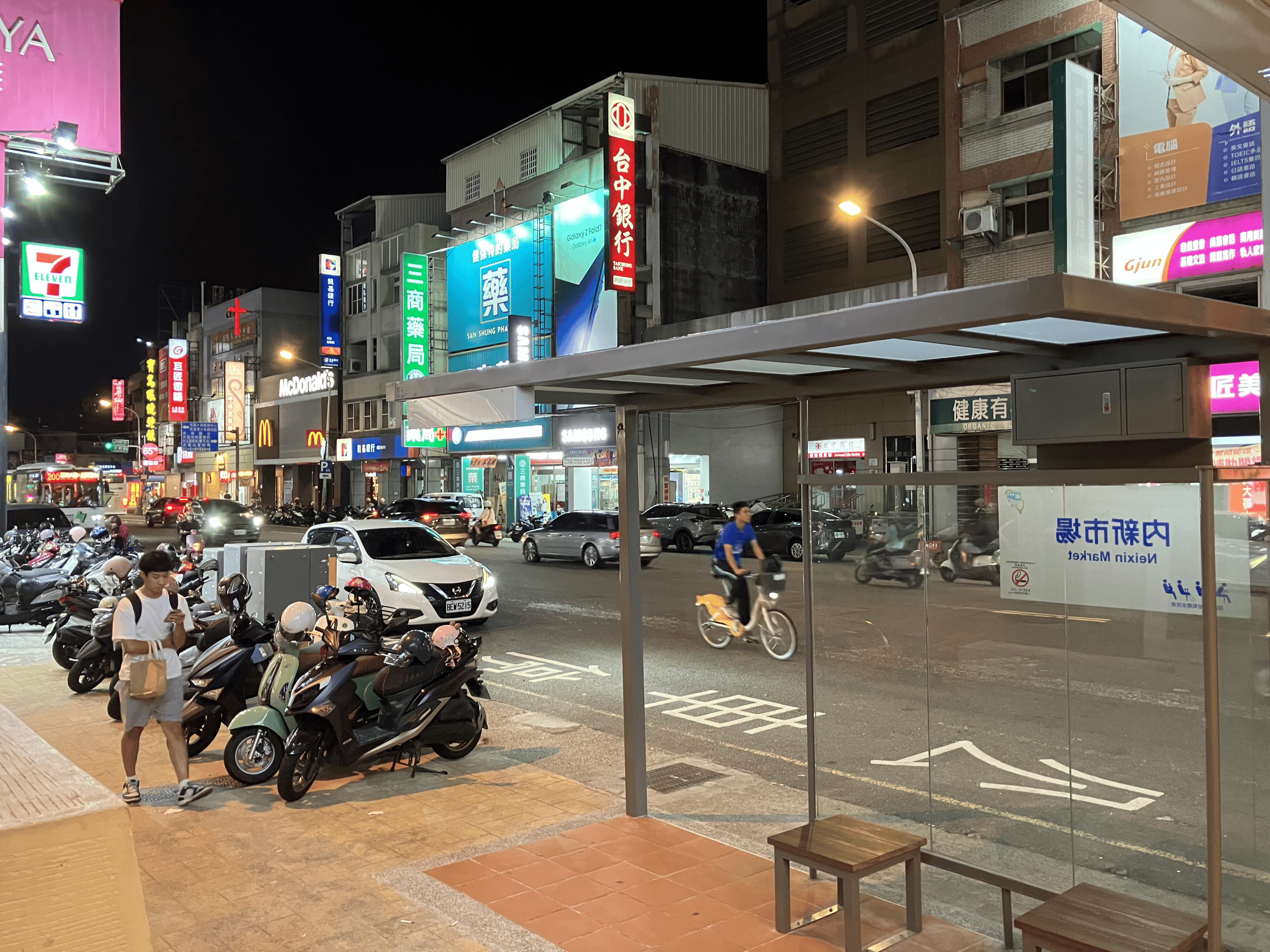
The morning after, I went to the Wufeng First Market, which is in Wufeng but out on Zhongzheng Road and fairly far from where I am. It’s also not bad, and I forgot how dense Taiwan gets given the smallest possible number of people living close by. The market was packed, and this really isn’t something that you see outside of a big city in the US. Impressive!
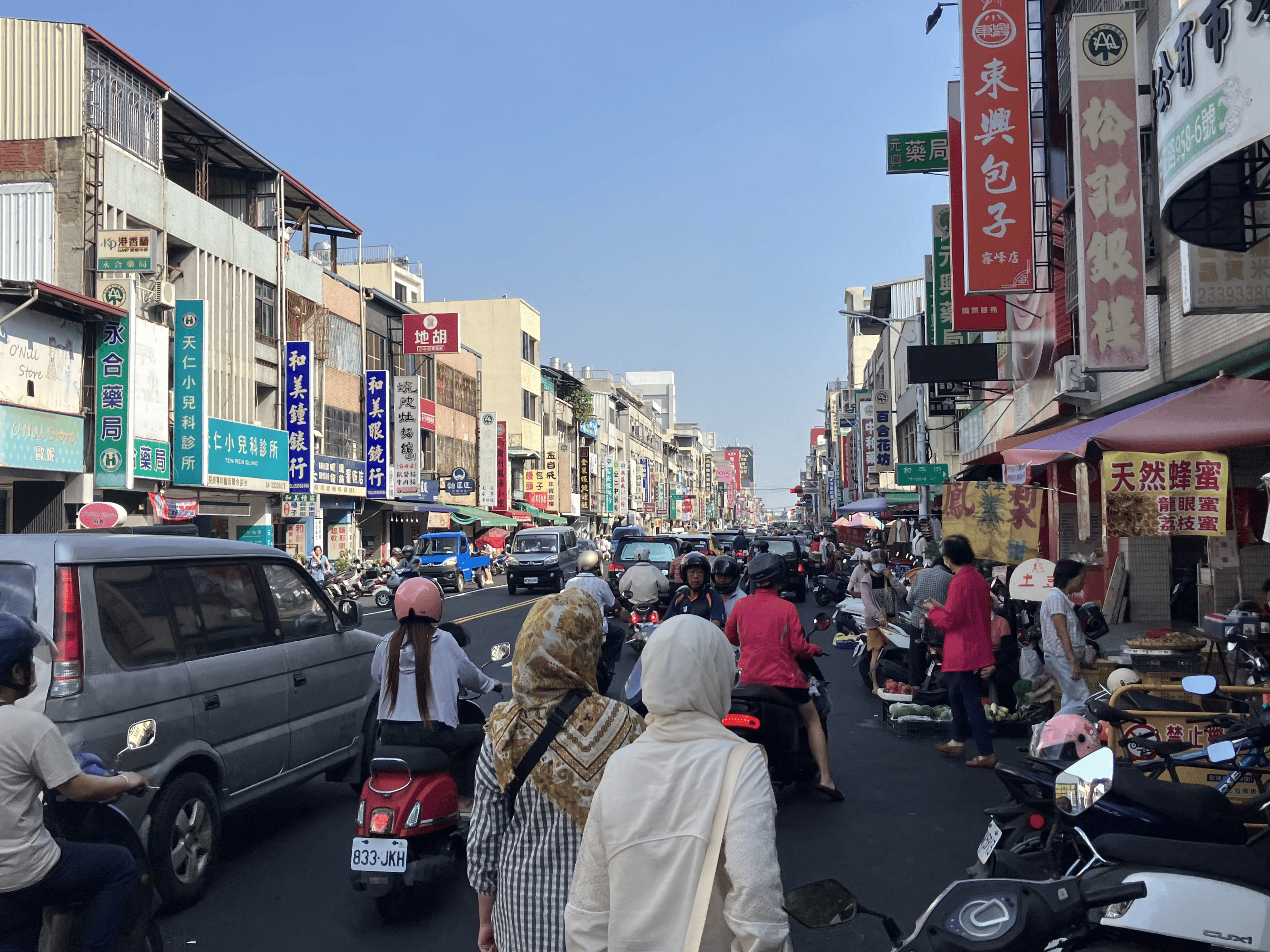
Later on that day, I was too obsessed not to try to make my way downtown for the sole purpose of visiting the Green Line MRT. Some people say that public transit can’t be a tourist attraction, but clearly, those people have never seen an elevated traincar with cutesy eyes painted on it and a vending machine full of merchandise just out front.
The views from the TMRT are actually very nice because the whole system is elevated, but you can’t see it in this photo because it was nighttime when I shot it (being that the train is packed during the day and I wanted to avoid being insensitive with my phone camera out in the crowd).

But, then, most of Taichung is still built on the bones of the relatively old structure that you see in most major Taiwanese cities — dense neighborhoods connected by enormously wide roads built during the early KMT years and cars and scooters whipping down at breakneck-and-end-your-life speed.
The sprawliest parts of the city are further north and west, where there’s more going on but less density to build on top of. It’s mostly Beitun, Xitun around Taichung Central Park (ironically placed way out at the edge of the city), and some parts of Wuri away from the HSR station.
Other than around Taichung Central Park, the worst part about Taichung’s car-centricity is that it tends to hit all at once: as soon as you get far enough from the urban core, even if the density stays, the sidewalks and tree cover will abruptly end and you’ll be plunged into a giant, wide road putting your life on the line walking directly next to traffic that doesn’t seem to mind getting right up to your shoulder and having nowhere to hide from the blazing sun and suffocating humidity.
Taichung’s weather is a little more stable than in the north, and seemingly more manageable than in the south, but it’s definitely best when you get some help. Being stuck in a pavement island in Taichung, even in October (still firmly “summer” in Taiwan), is pretty uncomfortable.
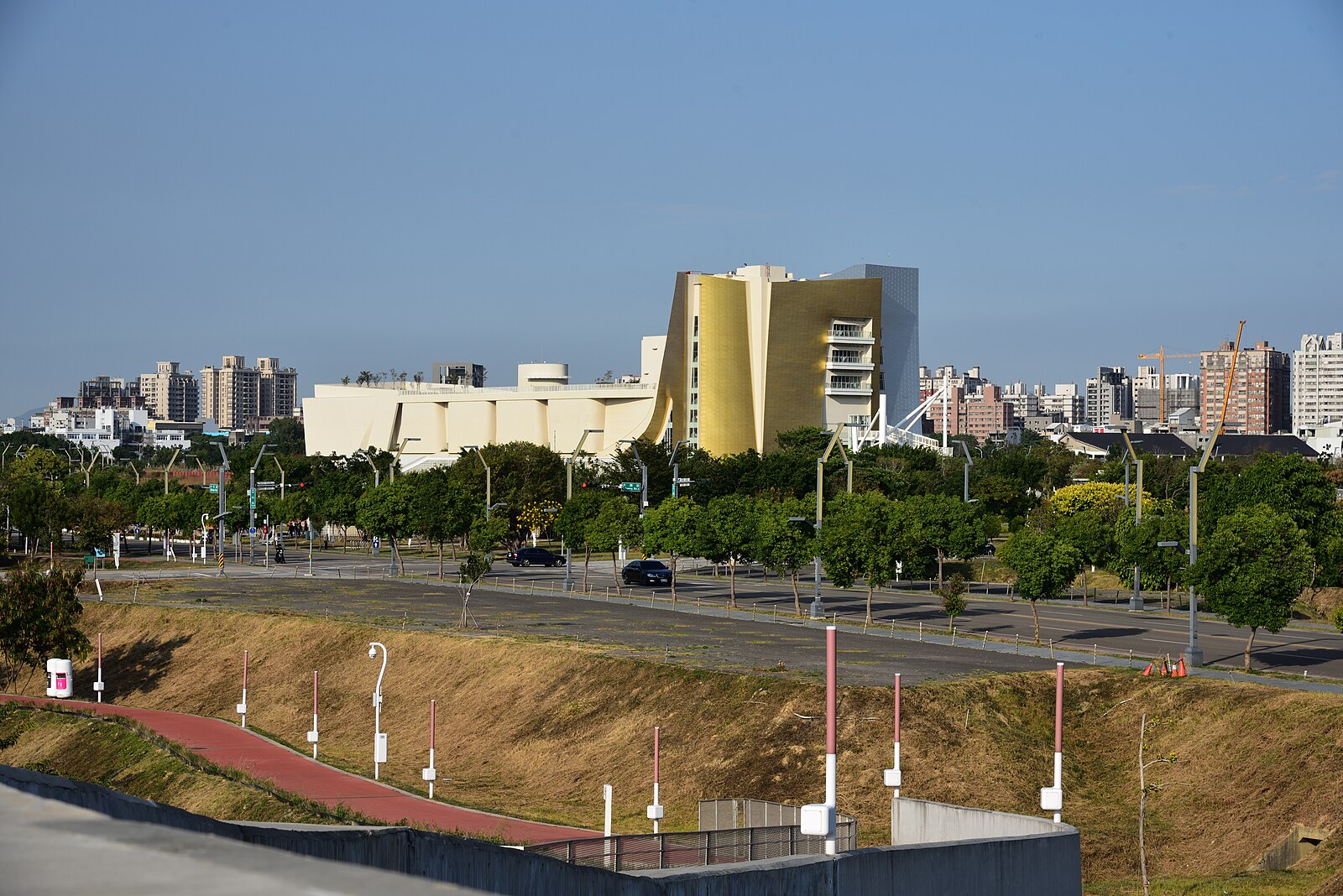
Image above credit: WC-QHS, CC BY-SA 4.0, via Wikimedia Commons.
At the very least, Taichung’s bus system is pretty world-class and unlike anything I’ve ever seen or used. Chains of buses line the streets throughout the whole city, and a lot of the routes are fully electrified, too. Routes like 台中客運 Taichung Bus 200 and 304 make the TMRT’s lack of extensivity and 2034 completion timeline for the Blue Line easier to handle, provided you’re okay with fitting a metro’s worth of people onto a single-car-sized bus at rush hour (around 10 PM if going south. Just a warning).
It’s difficult to tell if the city knows what it’s doing and is building out urbanism in the same way that most American cities are slowly starting to do, or if they’re still stuck in the past’s version of the future. A strange thing to note is that the Green Line MRT, which runs along Wenxin Road, goes mostly through parts of the city that aren’t really pleasant otherwise. Either they want to ride over the heat and pavement of Beitun in an air-conditioned train as a victory lap or they’re trying to make up the difference by throwing these communities a bone. The center of the line is at a wealthy area and Taichung City Hall, but a lot of the outskirts don’t have much going on around the stops.
There are certainly a lot of places on the entirely other end of the spectrum, though. Xitun is really two-sided because of that contrast between Central Park and its other main attraction up in the northwest corner of the city, the Feng Chia Night Market.
Feng Chia at night has just about everything to see: music, stalls everywhere for food, drinks, clothing, anything else you’d find at a market, and it’s really huge and really dense.

I stayed there for a long time, and the air conditioners over the crowds actually helped me get a little bit more comfortable after walking across a large chunk of Taichung Central Park (really a combination of the air conditioners, the cooling down as it got darker, and the massive apple milk that I bought from one of the vendors).
It was a lot to take in, but everything I was taking in was good. Night markets are like that. An easier-to-access one is the Yizhong Street night market, which has a good sweet potato ball vendor but otherwise isn’t as big or impressive. It is definitely functional, though, and certainly a good time.
Toward the east end of Yizhong Street is also a little neighborhood with a “Box Design Hotel” and some brick streets with colorfully-lit hot-air balloon sculptures. That would definitely be on my list of considerations if I were looking for a hotel to stay in in the future. For now, though, I have my dorm.
In the morning, there are also a good number of more centrally-located places to relax. I wanted to get some work done and found this really neat little cafe with good online reviews called the Fleet Street Cafe. If you’re in Taichung and you want to go to a Western-style cafe that doesn’t charge Western-style prices and where you can sit in a little miniature bookstore looking over the narrow streets of 中區, this is your place. I stayed for over two hours and actually got things done! It’s a good slow-grind environment.
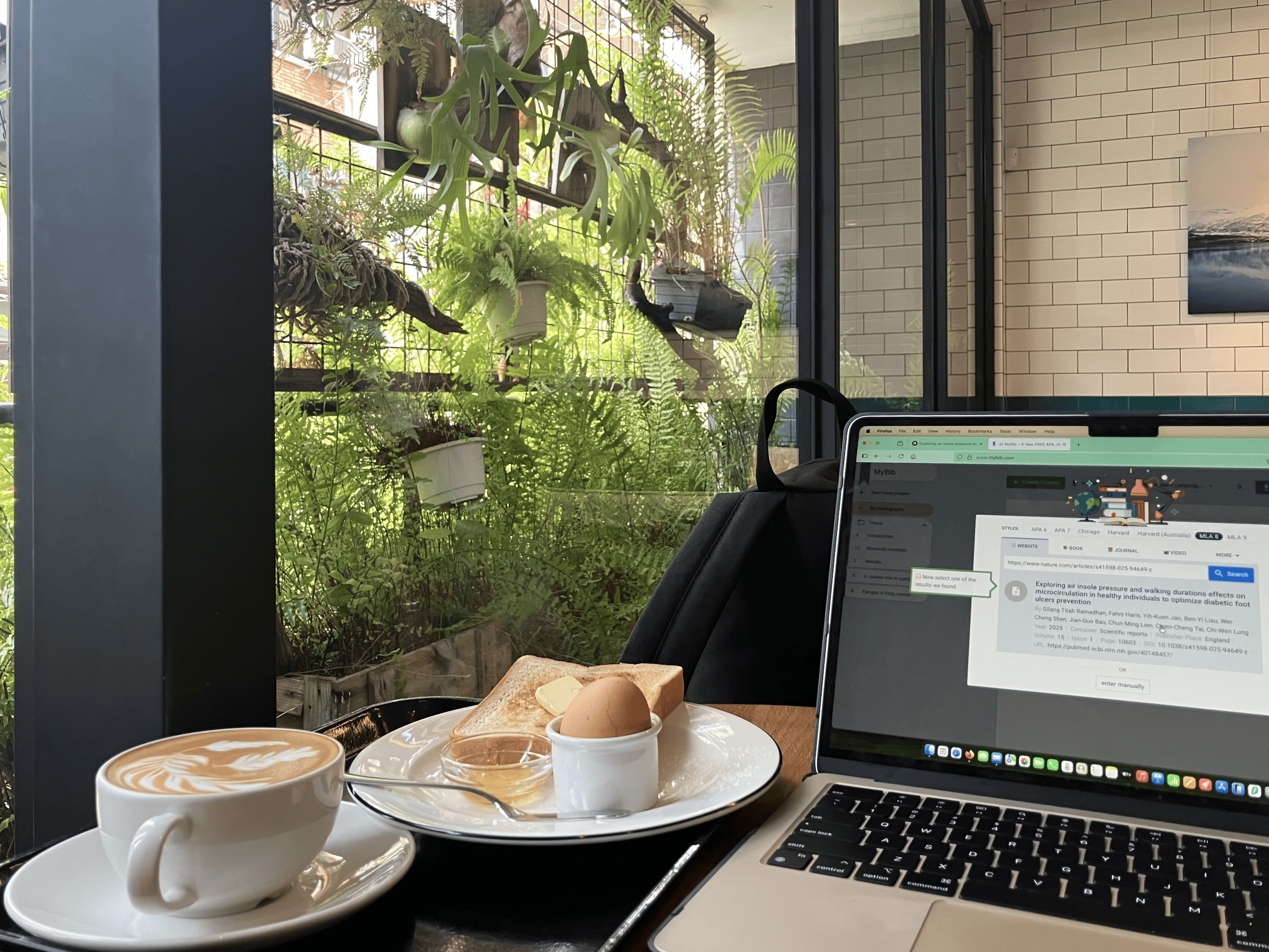
And into the evening, there’s another relaxing place not far away with a strange English name: “Audit Village”. It is, though, just a direct translation of the name “審計新村 ShěnJì XīnCún”/ShenJi New Village (I guess maybe it just sounds nicer in Mandarin).
When I was in Taipei I talked about how much I thought the Songshan Cultural and Creative Park / Songyan was cool, and this was kind of like that, except it was an old dormitory complex used by employees of the provincial auditing office. It actually converts into a little market-park really well, too, like those kinds of things seem to do, except without the intense tobacco smell that might either repel or draw you in in the case of the Taipei version.

Speaking of Taipei, if you miss the feeling of money and skyscrapers blowing out of the ground and ringing the bells of the cash registers and consumerism all around you while watching sports cars with “XXX 8888” license plates drag-race down the business district, Taichung’s 7th Redevelopment Zone has you covered (Qi Qi! 七期). Never before have I seen a city government do too good a job at reinvigorating the local economy.

Image above credit: Victor Liu, CC BY 2.0, via Wikimedia Commons.
It’s this kind of place that serves to remind you that you do have it all right here. Or, at least, that those ones up in the towers have it all right here.
But, actually, not far from Qiqi is the 春水堂 Chun Shui Tang restaurant, apparently the originator of bubble tea (and, somehow, Taichung remains out of the imaginations of pop culture worldwide? Where are my anime-inspired Wenxin Road metro dark-mode Wallpaper Engine backgrounds?).
Most of the city, though, within the sprawly edges and in between the highlights, is fairly normal and honestly pretty nice. Especially around Central District just above and below the train station and a little into Nantun, West District and southern Xitun. A few more pictures for good measure:

Luguang Village isn’t quite the most notable neighborhood on Taichung’s map, but notably interesting to me is the fact that their FamilyMart still has the old doorbell tune (the one that plays in Japan and elsewhere but not anymore in most parts of Taiwan). Actually, it plays both (they just Band-Aided the new tone on over the old one, which I found way too amusing when I first walked in).
Nantun has some nice neighborhoods with the greenery and narrow streets that you see in some nicer parts of Taipei, but without exactly the same level of density:

And in some places, even when there are cars, at least they’re old, small, and brightly-colored (I actually saw a decent amount of this, and not one oversized pickup truck outside of the Toyota dealership near the Wenxin Yinghua MRT station!).

For the busier parts of the city, Taichung Park (the park that is actually located in the center of town) and the canal along Zhongming South Road make for some decent urban environments.

Zhongming South Road isn’t around anything that I really needed to visit, but I did find myself walking around West District and, for the lack of sidewalks and tree cover in that area, especially, it was a good thing to see.
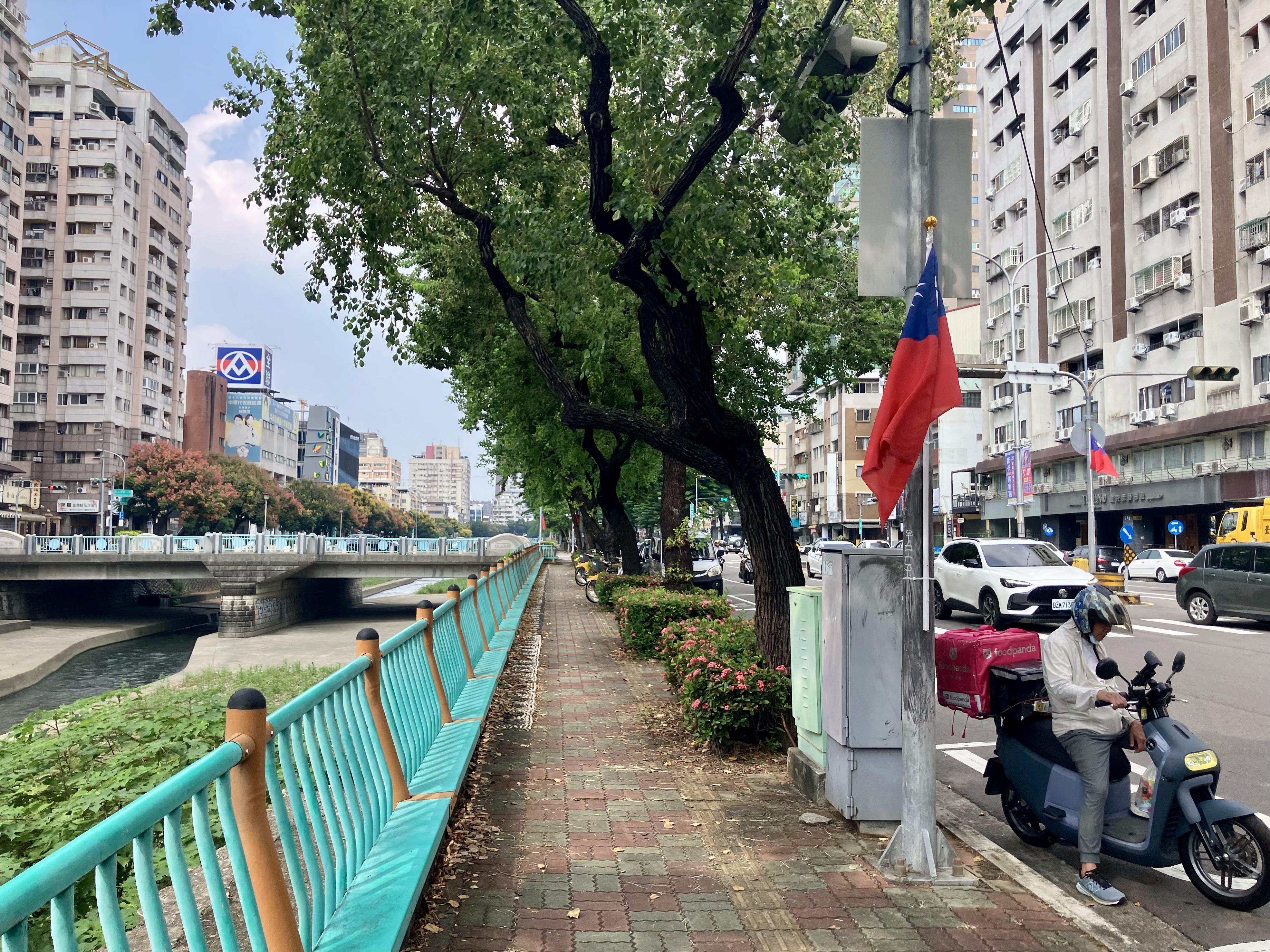
So, after all, I feel like I’ve explored Taichung enough to feel comfortable that I’ve seen it, and secure knowing that I have places to go on the weekends (whether it be to get work done or to buy sweet potato balls). And I can feel pretty proud to live what I choose to believe is both the world’s next great city and the home of the future Taiwanese president (當然是盧市長吧!). It’s not even a hot take, I’m pretty sure it’s just all political analysts’ prediction.
I’m writing this in my dorm with some roommates who I’m gradually getting to know. I’m living in the “international student housing”, which they keep separate (I guess maybe that’s worth doing).
I’ve been here almost a week. I’m grateful and I’m going to try to make the most out of the rest of this year.
I appreciate the read again.
來台中吧!
“bonus bopomoment”:
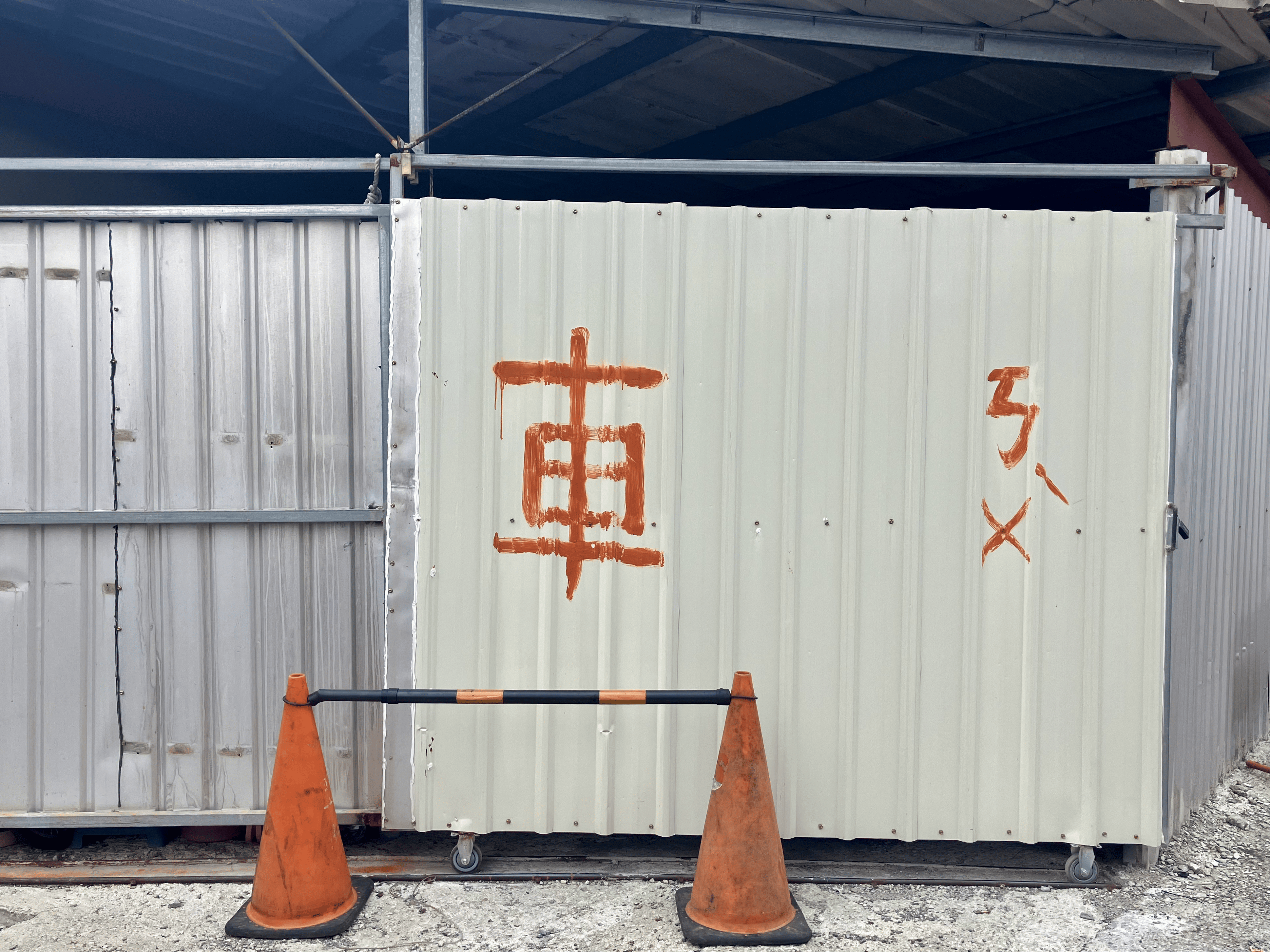
And an addendum from the future: South District is nice too. The sidewalks not only exist, but they’re wide and there are trees everywhere. It feels like what I imagine one of those old New York City expensive neighborhoods feels like.
And there’s a big hardware store by Taichung Rd., the 大台中五金百貨, which is the only reason I ever go down there. There are closer hardware stores to my university, I just like having an excuse to walk through South District.
多謝大家!
